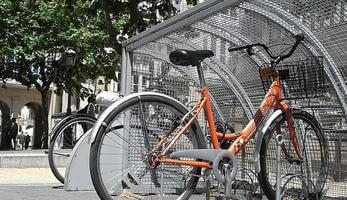4th generation public bike system
Summary
Vitoria-Gasteiz wanted to improve the existing public-bike system of 17 stations by creating a fourth generation system, fully integrated with the public transport network, and by increasing the number of lending points.
Implementing sustainable mobility
The objetives of this measure were:
- To design a complementary strategy to improve the public transport offer in Vitoria-Gasteiz through the integration of a 4th generation public bike system scheme.
- To develop the current public-bike system of 17 stations towards a system fully integrated with the public transport network, and to increase the number of lending points, placing these at no more than 5 minutes walking from anywhere in the city.
- To support the local infrastructure that orientates towards the public transport and the bicycle the demand of mobility.
- To impulse measures that give relevancy to the bicycle and the public transport or that show a public commitment of the municipality towards the sustainable mobility.
- To explore the potentials of this scheme in relation to inter-modality and tourism, to further widen the cycling culture and to increase the share of bike trips and public transport (both collective and individual) in the modal split of Vitoria-Gasteiz.
Progress
Vitoria-Gasteiz made a feasibility study for the implementation of the system. The public bike scheme system with 45 stations and 350 bicycles was expected to complement the new public transport network recently implemented, improving the quality and capacity of the services 24 hour a day, 7 days a week and 365 days a year. The new scheme would be fully integrated with the existing ticketing and information systems for public transport. The design of the bike stations was done in order to support in the best way the offer both the bus and tram services.
Sizing and coverage of the final scheme and definition of service levels was stablished, as well as a proposal for its implementation in phases, public transport tariff integration proposal, development of strategies for integration with collective public transport network. The following aspects of the system were specified:
- Bicycle type and features.
- Station components: platform, terminal, power, etc.
- Station location.
- Number of stations & bicycles in each station.
- Software architecture.
- Website and digital media.
- Human resources.
- Customer services.
- Communication plan.
A battery of indicators of service levels was set up.
The City Council initiated the administrative procedure for contracting a company to launch the system. The public tender was called on May 2011 and the assessmet of bids was completed in October 2011.
However, the political decision to launch the new system was finally negative, due to its expensive cost and the lack of enough funds to finance it. Therefore, the system was not launched.
Outcomes
The expected results were the following ones:
- A reduction in emissions from transport.
- The support for the local infrastructure that orientates the demand of mobility towards the public transport and the bicycle.
- The increasing of the share of bike trips and public transport (both collective and individual) in the modal split of Vitoria-Gasteiz.







